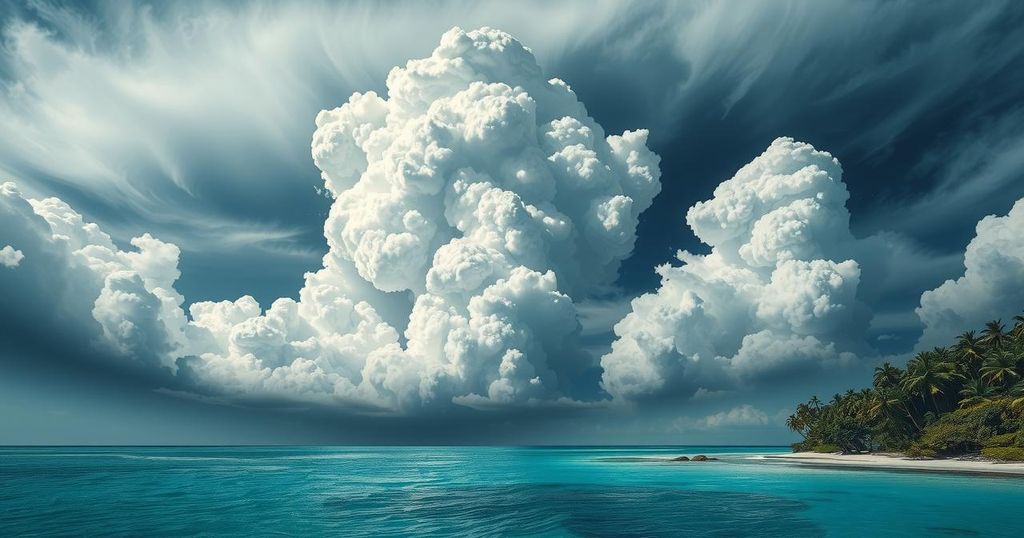Unprecedented Cyclone Activity in the Southern Hemisphere

On Tuesday, the Southern Hemisphere experienced a rare event with six tropical cyclones active simultaneously in the Pacific and Indian Oceans. This includes Honde, Garance, Bianca, Alfred, Seru, and Rae. Contributing factors such as La Nina are believed to influence this storm activity, which is significantly above the historical average this season.
On Tuesday, an unprecedented occurrence arose in the Southern Hemisphere, where six tropical cyclones were simultaneously active in the Pacific and Indian Oceans. Among these were Tropical Cyclone Honde off Mozambique, Cyclone Garance near Madagascar, Hurricane Bianca west of Australia, Hurricane Alfred northeast of Australia, and Cyclones Seru and Rae north of New Zealand. This remarkable event matches a similar record set in 1989.
The Southern Hemisphere’s tropical season generally occurs from November to April. A total of 22 tropical depressions and cyclones have been recorded this season, with the Accumulated Cyclone Energy reaching 166.3, which is 130 percent above the norm for this time of year. Factors contributing to the prolific storm activity include weak wind shear and elevated sea-surface temperatures, attributed to the La Nina phenomenon, as explained by AccuWeather’s Lead International Expert, Jason Nicholls.
Cyclone Honde is expected to impact southern Madagascar with heavy rainfall and gusty winds, bringing up to 48 inches of rain and winds nearing 100 mph. Meanwhile, Cyclone Garance may be on track for Reunion Island, forecasted to bring significant rainfall and potential damage. This will be the first hurricane to approach the island since Cyclone Firinga in 1989.
Hurricane Alfred, which developed on February 24 in the Coral Sea, is anticipated to intensify further while moving south, potentially bringing rain to southeastern Queensland and northeastern New South Wales next week. The last advisories were issued for Cyclone Rae, which impacted Fiji negatively just prior to Honde’s formation.
In summary, the Southern Hemisphere is witnessing an extraordinary instance of six active tropical cyclones, a phenomenon last recorded in 1989. With significant implications for regions such as Madagascar and Reunion Island, the current tropical season appears to be characterized by above-average storm activity due to favorable meteorological conditions. The ongoing situation requires continuous monitoring due to its potential impact on affected areas.
Original Source: www.accuweather.com







